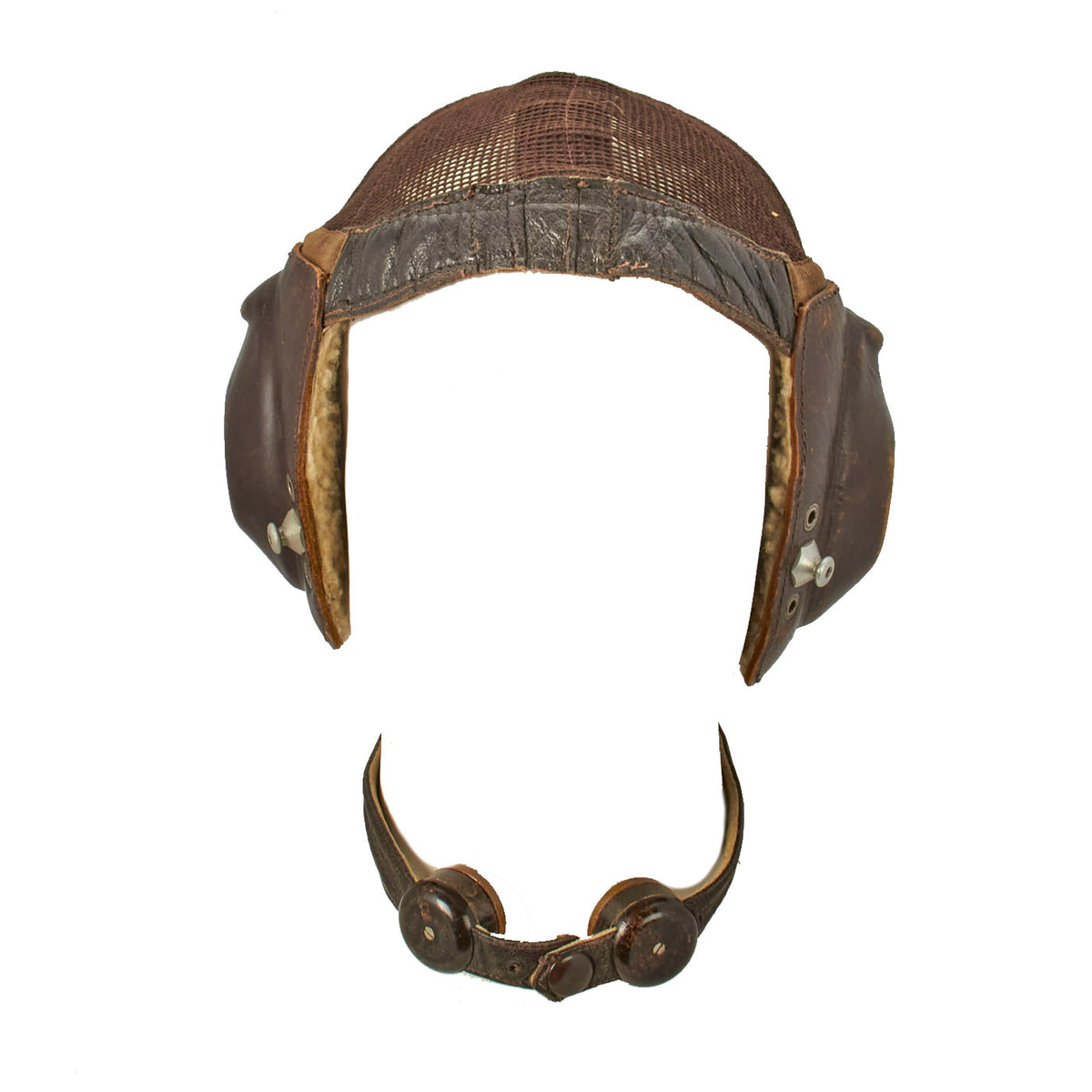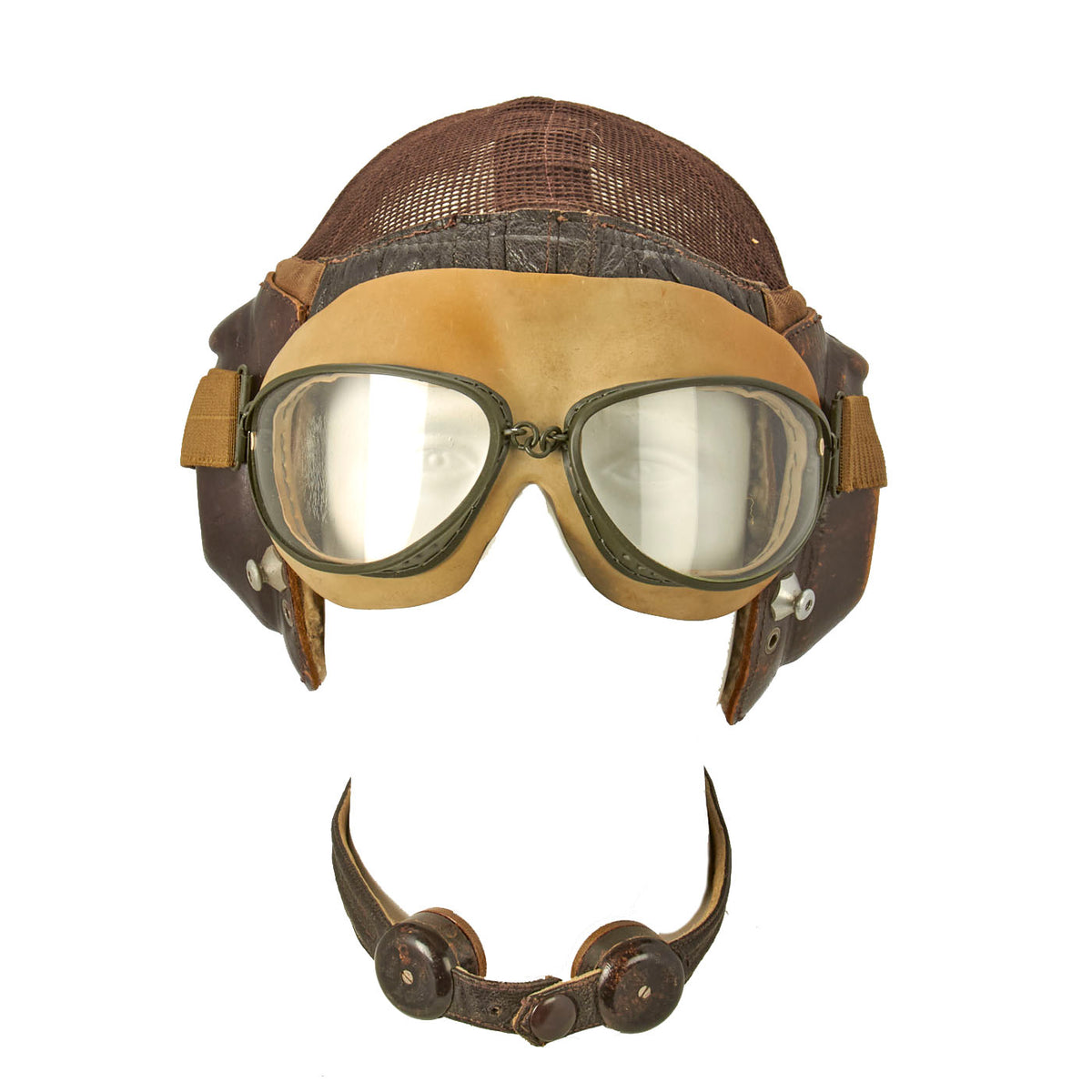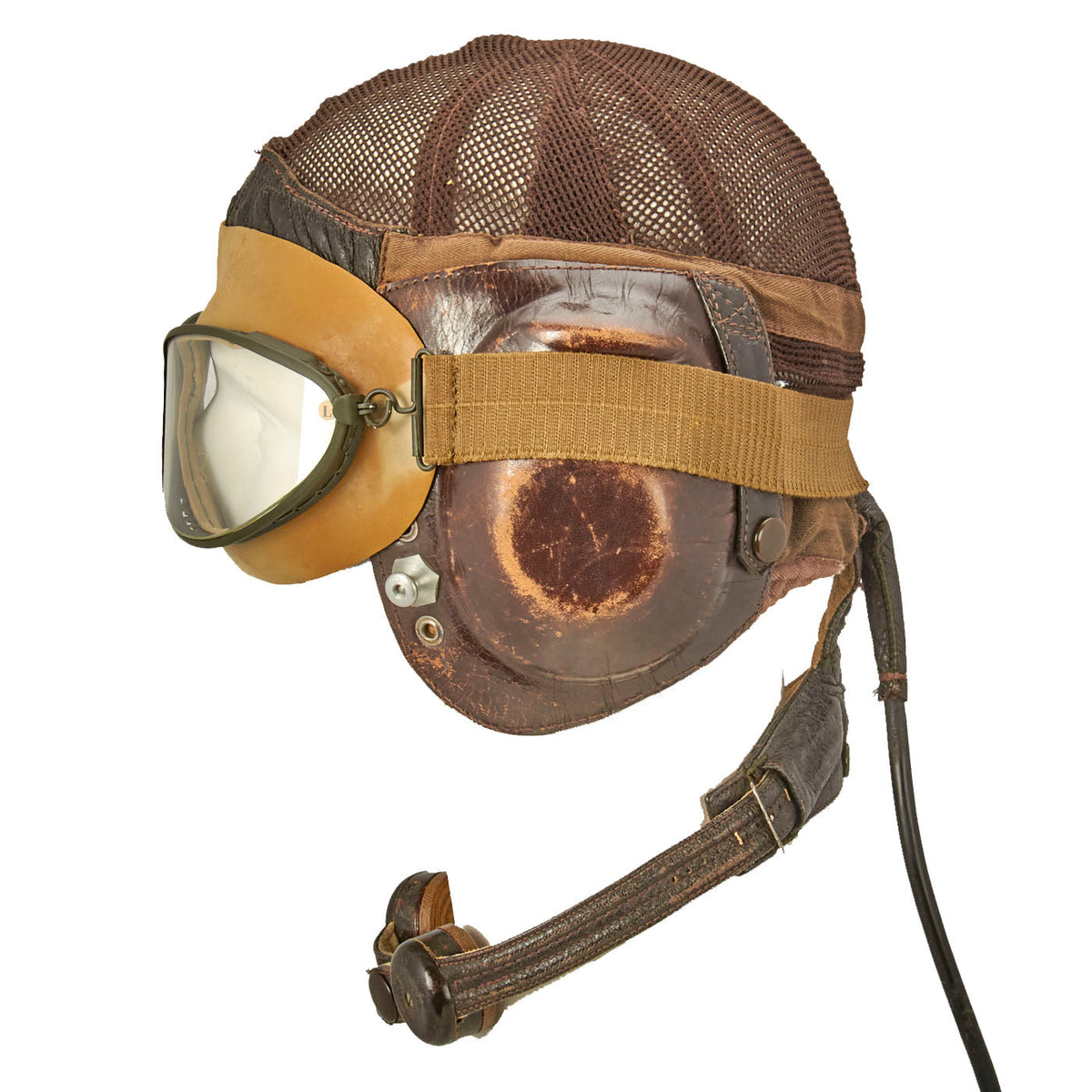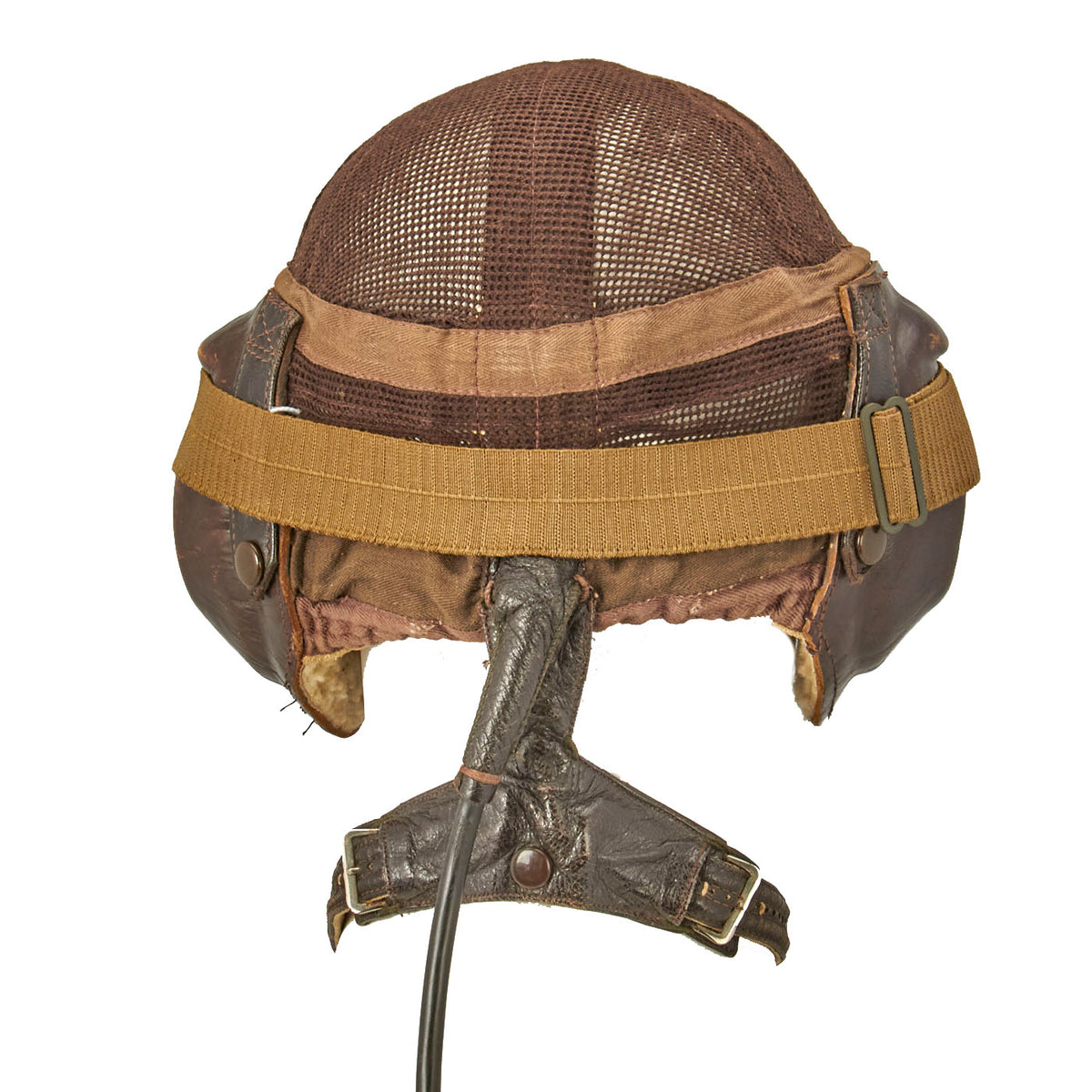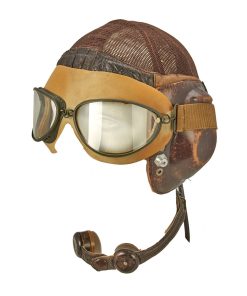Original German WWII Luftwaffe LKpN101 Netzkopfhaube Summer Flying Helmet with MINT Unissued Flight Goggles In Box Original Items
$ 1.295,00 $ 323,75
Original Item: Only One Available. The famous net-top helmet proved popular with Luftwaffe pilots as it was designed for comfort and without the restriction of a chinstrap. This classic mesh flying helmet which has become synonymous with Luftwaffe fighter pilots in WW2.
This example has a manufacturer’s label coded BXO indicating it was produced by the firm Deutsche Telephonwerke & Kabelindustrie AG of Berlin, a manufacturer of telephone and radio equipment. We do not know if they manufactured this flying helmet, or whether it was shipped to them for outfitting with the avionics.
The size given is hard to read but is appears to be stamped 54. Overall condition is very good to excellent. This example features dark leather receiver cups and provision for the Luftwaffe later variant with attachment points for 3-strap oxygen masks.
The throat microphones are marked Mi4c and Ln 26779-3 meaning the avionics are comprised of oval Mi4b magnetic type throat microphones with four-pole break coupling/plug. The helmet carries the short communication cord favored by fighter pilots and is fitted with a plug that is nicely marked BLK v F 127560.
Goggles are in the standard teardrop design, with aviator-style clear glass lenses, Luftwaffe gray painted aluminum frames with rubber eye sockets, each of the eye sockets stitched to the framework of the googles, each of the frames have five ventilation vents along the top and bottom edges, the frames linked together by an aluminum nose chain, ribbed olive green elasticized headband strap with sliding metal fit adjustment buckle, elongated loops with hooks attaching the headband to the frames on either side, the googles themselves attached to the frames by small metal clips which also act as locking clips to secure the lenses in the frames. The goggles are in near mint condition and come with the original box.
Near extremely fine overall condition.
Early First World War pilots in military aircraft soon discovered that appropriate protective flight goggles were a necessity, due to the cold, sun glare and the all too frequent occurrence of oil leaking into the slipstream and covering the pilot. Originally the German military was caught unprepared and no specific protective goggles for pilots were available, which resulted in the pilots utilizing commercially produced or captured enemy protective goggles. Early in the war, the Carl Zeiss optics firm of Jena developed specific protective flight goggles that became the standard pattern for other manufacturers. Further improvements and refinements of assorted protective flight goggles continued in the inter-war years and by the start of the Second World War, there were no fewer then nine types of protective flight goggles available and nine main manufacturers including, Carl Zeiss, Ernst Leitz, Philip M. Winter, O.W. Wagner, Nitsche & Günther, Knothe, Cellowaro, Bauer, Uvex and Auer.
Overall a wonderful honest Luftwaffe fighter pilots helmet offered in very good complete condition.
Fast Shipping with Professional Packaging
Thanks to our longstanding association with UPS FedEx DHL, and other major international carriers, we are able to provide a range of shipping options. Our warehouse staff is expertly trained and will wrap your products according to our exact and precise specifications. Prior to shipping, your goods will be thoroughly examined and securely secured. We ship to thousands clients each day across multiple countries. This shows how we're dedicated to be the largest retailer on the internet. Warehouses and distribution centres can be located throughout Europe as well as the USA.
Note: Orders with more than one item will be assigned a processing date depending on the item.
Before shipping before shipping, we'll conduct a thorough inspection of the items you have ordered. Today, the majority of orders will be delivered within 48 hours. The delivery time will be between 3-7 days.
Returns
The stock is dynamic and we cannot completely manage it because multiple stakeholders are involved, including our factory and warehouse. So the actual stock may alter at any time. It's possible that you may not receive your order once the order has been made.
Our policy is valid for a period of 30 days. If you don't receive the product within 30 days, we are not able to issue a refund or an exchange.
You can only return an item if it is unused and in the same state as the day you received it. You must have the item in its original packaging.
Related products
Uncategorized
Armored Burgonet Helmet & Polearm from Scottish Castle Leith Hall Circa 1700 Original Items
Uncategorized
Angolan Rebel 1970s era 60mm Inert Display Mortar from Angolan Civil War Original Items
Uncategorized
Uncategorized
Uncategorized
Uncategorized
Uncategorized
Band of Brothers ORIGINAL GERMAN WWII Le. F.H. 18 10.5cm ARTILLERY PIECE Original Items
Uncategorized
Uncategorized
Uncategorized
Armoured Fighting Vehicles of the World: AFVs of World War One (Hardcover Book) New Made Items
Uncategorized
Uncategorized
Uncategorized
Uncategorized
Uncategorized
Uncategorized
Uncategorized
Uncategorized


